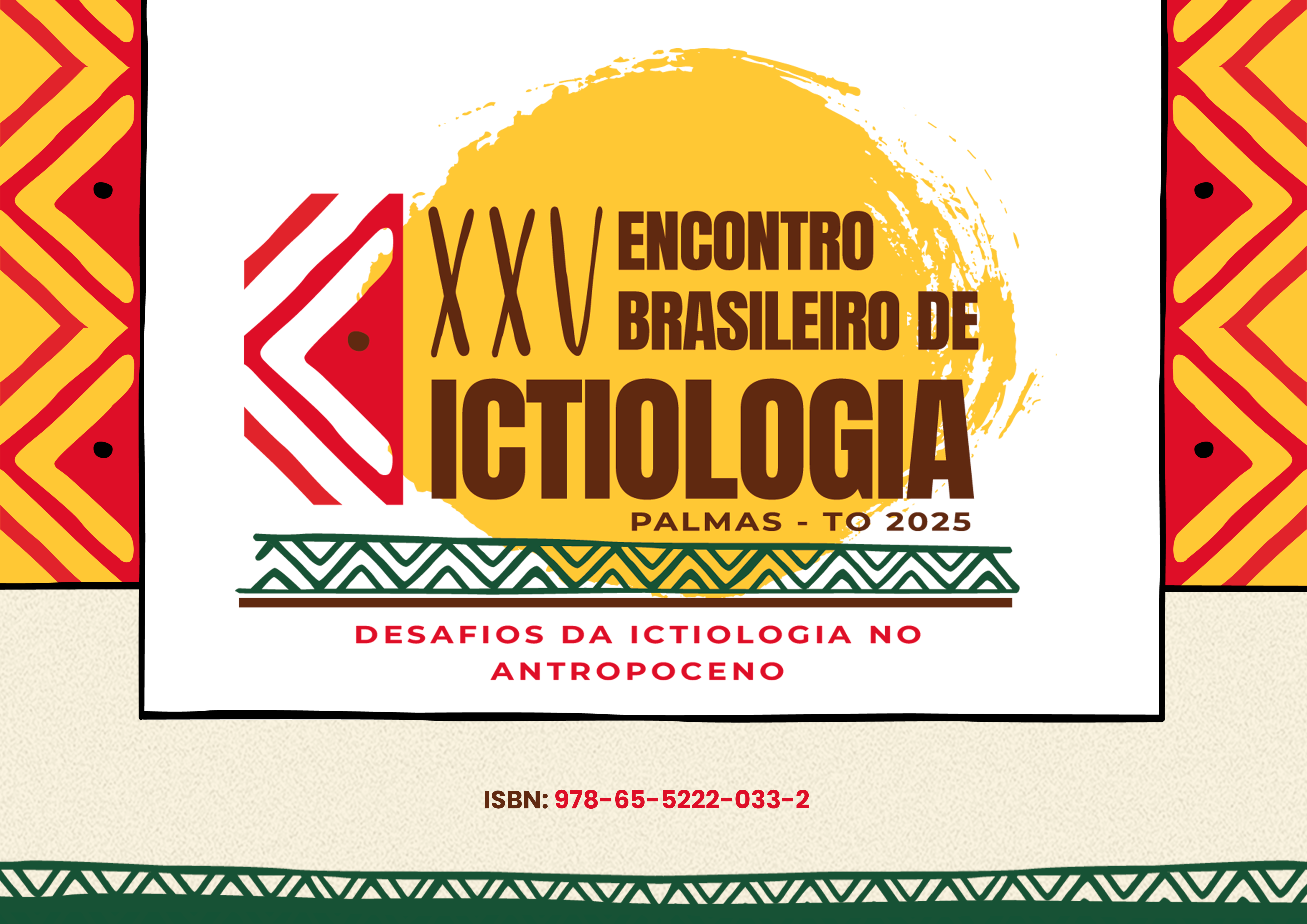SURVIVING THE CHILL: HOW EXTREME ANTARCTIC CONDITIONS SHAPE SKULL MORPHOLOGY IN ICEFISHES (NOTOTHENIOIDEI)
"2025-02-12 10:36:07" // app/Providers/../Base/Publico/Artigo/resources/show_includes/info_artigo.blade.php
App\Base\Administrativo\Model\Artigo {#1845 // app/Providers/../Base/Publico/Artigo/resources/show_includes/info_artigo.blade.php #connection: "mysql" +table: "artigo" #primaryKey: "id" #keyType: "int" +incrementing: true #with: [] #withCount: [] +preventsLazyLoading: false #perPage: 15 +exists: true +wasRecentlyCreated: false #escapeWhenCastingToString: false #attributes: array:35 [ "id" => 119616 "edicao_id" => 384 "trabalho_id" => 91 "inscrito_id" => 766 "titulo" => "SURVIVING THE CHILL: HOW EXTREME ANTARCTIC CONDITIONS SHAPE SKULL MORPHOLOGY IN ICEFISHES (NOTOTHENIOIDEI)" "resumo" => "Antarctic notothenioid fishes are a prime example of vertebrate adaptive radiation within a marine setting under extreme environmental conditions. Emerging from a common ancestor around 22 million years ago, the notothenioids are notable for the evolution of antifreeze glycoproteins, which played a crucial role in allowing these originally bottom-dwelling fishes to survive and adapt to seawater temperatures that approach the freezing point. While extensive craniofacial modifications have accompanied this adaptive radiation, little is known about how these morphological changes have contributed to the evolutionary success of notothenioids. Here, we analyze the skulls of 80 notothenioid and 92 Perciform species using micro-CT scanning and three-dimensional geometric morphometrics to show that variation in skull shape is best explained by divergent selection with respect to habitat. Bathydraconidae and Channichthyidae exhibited the greatest morphological disparity with elongated skulls compared to other notothenioids and related Perciformes. There was an accelerated pace of morphological evolution within the eight icefish families, revealing that their rapid diversification coincided with the development of comparatively high levels of morphological modularity during the Miocene. While conventional studies often suggest that extensive integration might limit phenotypic evolution, icefishes represent an example where increased modularity could potentially enhance evolutionary potential. We propose that the evolution of heightened phenotypic modularity in icefishes could be considered a pivotal innovation, facilitating their morphological evolution and subsequent adaptive radiation in Antarctica." "modalidade" => "Comunicação Oral (CO)" "area_tematica" => "AT 06 - Anatomia e Morfologia" "palavra_chave" => ", , , , " "idioma" => "Português" "arquivo" => "TRABALHO__EV205_MD1_ID766_TB91_20092024113623.pdf" "created_at" => "2025-02-13 11:08:16" "updated_at" => null "ativo" => 1 "autor_nome" => "MAYARA PEREIRA NEVES" "autor_nome_curto" => "MAYARA NEVES" "autor_email" => "mayara-nevesbio@hotmail.com" "autor_ies" => "UNIVERSIDADE FEDERAL DO PARANÁ (UFPR)" "autor_imagem" => "" "edicao_url" => "anais-do-ebi---encontro-brasileiro-de-ictiologia" "edicao_nome" => "Anais do EBI - Encontro Brasileiro de Ictiologia" "edicao_evento" => "XXV ENCONTRO BRASILEIRO DE ICTIOLOGIA" "edicao_ano" => 2025 "edicao_pasta" => "anais/ebi/2025" "edicao_logo" => null "edicao_capa" => "67b49e4d8c758_18022025115053.png" "data_publicacao" => null "edicao_publicada_em" => "2025-02-12 10:36:07" "publicacao_id" => 116 "publicacao_nome" => "Revista EBI" "publicacao_codigo" => "978-65-5222-033-2" "tipo_codigo_id" => 2 "tipo_codigo_nome" => "ISBN" "tipo_publicacao_id" => 1 "tipo_publicacao_nome" => "ANAIS de Evento" ] #original: array:35 [ "id" => 119616 "edicao_id" => 384 "trabalho_id" => 91 "inscrito_id" => 766 "titulo" => "SURVIVING THE CHILL: HOW EXTREME ANTARCTIC CONDITIONS SHAPE SKULL MORPHOLOGY IN ICEFISHES (NOTOTHENIOIDEI)" "resumo" => "Antarctic notothenioid fishes are a prime example of vertebrate adaptive radiation within a marine setting under extreme environmental conditions. Emerging from a common ancestor around 22 million years ago, the notothenioids are notable for the evolution of antifreeze glycoproteins, which played a crucial role in allowing these originally bottom-dwelling fishes to survive and adapt to seawater temperatures that approach the freezing point. While extensive craniofacial modifications have accompanied this adaptive radiation, little is known about how these morphological changes have contributed to the evolutionary success of notothenioids. Here, we analyze the skulls of 80 notothenioid and 92 Perciform species using micro-CT scanning and three-dimensional geometric morphometrics to show that variation in skull shape is best explained by divergent selection with respect to habitat. Bathydraconidae and Channichthyidae exhibited the greatest morphological disparity with elongated skulls compared to other notothenioids and related Perciformes. There was an accelerated pace of morphological evolution within the eight icefish families, revealing that their rapid diversification coincided with the development of comparatively high levels of morphological modularity during the Miocene. While conventional studies often suggest that extensive integration might limit phenotypic evolution, icefishes represent an example where increased modularity could potentially enhance evolutionary potential. We propose that the evolution of heightened phenotypic modularity in icefishes could be considered a pivotal innovation, facilitating their morphological evolution and subsequent adaptive radiation in Antarctica." "modalidade" => "Comunicação Oral (CO)" "area_tematica" => "AT 06 - Anatomia e Morfologia" "palavra_chave" => ", , , , " "idioma" => "Português" "arquivo" => "TRABALHO__EV205_MD1_ID766_TB91_20092024113623.pdf" "created_at" => "2025-02-13 11:08:16" "updated_at" => null "ativo" => 1 "autor_nome" => "MAYARA PEREIRA NEVES" "autor_nome_curto" => "MAYARA NEVES" "autor_email" => "mayara-nevesbio@hotmail.com" "autor_ies" => "UNIVERSIDADE FEDERAL DO PARANÁ (UFPR)" "autor_imagem" => "" "edicao_url" => "anais-do-ebi---encontro-brasileiro-de-ictiologia" "edicao_nome" => "Anais do EBI - Encontro Brasileiro de Ictiologia" "edicao_evento" => "XXV ENCONTRO BRASILEIRO DE ICTIOLOGIA" "edicao_ano" => 2025 "edicao_pasta" => "anais/ebi/2025" "edicao_logo" => null "edicao_capa" => "67b49e4d8c758_18022025115053.png" "data_publicacao" => null "edicao_publicada_em" => "2025-02-12 10:36:07" "publicacao_id" => 116 "publicacao_nome" => "Revista EBI" "publicacao_codigo" => "978-65-5222-033-2" "tipo_codigo_id" => 2 "tipo_codigo_nome" => "ISBN" "tipo_publicacao_id" => 1 "tipo_publicacao_nome" => "ANAIS de Evento" ] #changes: [] #casts: array:14 [ "id" => "integer" "edicao_id" => "integer" "trabalho_id" => "integer" "inscrito_id" => "integer" "titulo" => "string" "resumo" => "string" "modalidade" => "string" "area_tematica" => "string" "palavra_chave" => "string" "idioma" => "string" "arquivo" => "string" "created_at" => "datetime" "updated_at" => "datetime" "ativo" => "boolean" ] #classCastCache: [] #attributeCastCache: [] #dates: [] #dateFormat: null #appends: [] #dispatchesEvents: [] #observables: [] #relations: [] #touches: [] +timestamps: false #hidden: [] #visible: [] +fillable: array:13 [ 0 => "edicao_id" 1 => "trabalho_id" 2 => "inscrito_id" 3 => "titulo" 4 => "resumo" 5 => "modalidade" 6 => "area_tematica" 7 => "palavra_chave" 8 => "idioma" 9 => "arquivo" 10 => "created_at" 11 => "updated_at" 12 => "ativo" ] #guarded: array:1 [ 0 => "*" ] }



